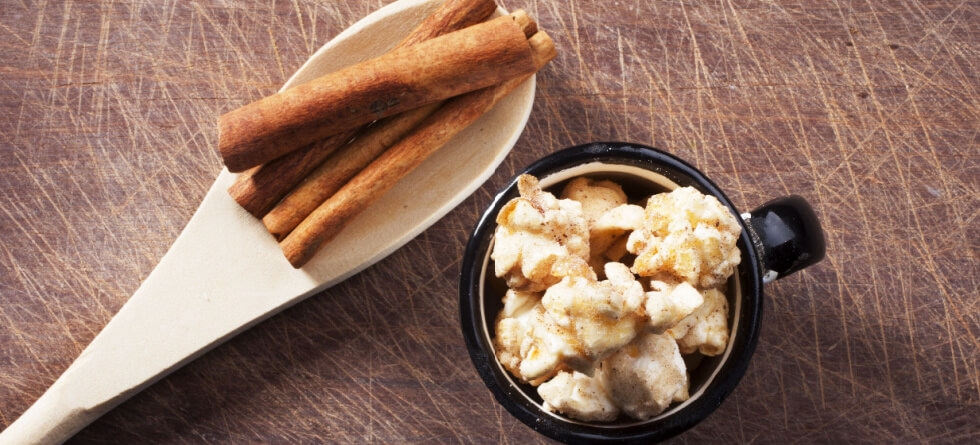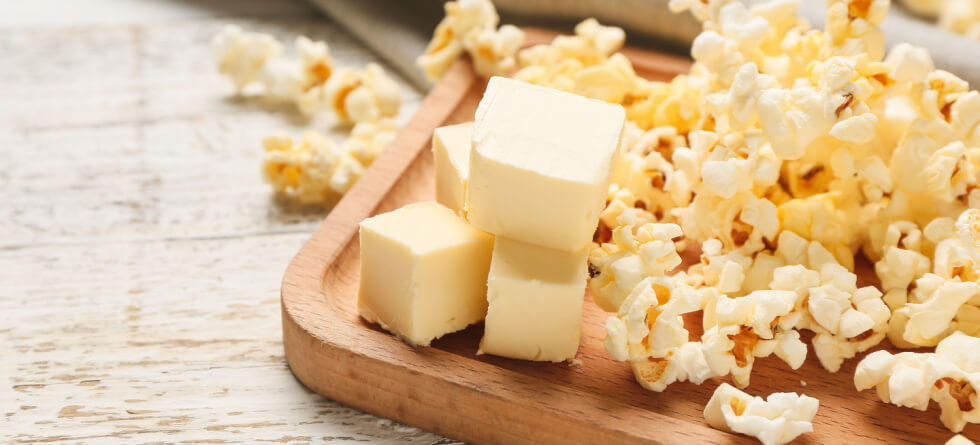Everyone loves popcorn. Whether regular or gourmet, popcorn is a perfect addition to every occasion – no birthday or wedding party, family movie night, and get-together is complete without bowls of crunchy, tasty popcorn to share.
Americans consume a great amount of beloved puffy snack, surveys show. We eat it home, at the movies, schools, stadiums, parties, in the parks and streets. It’s a low-calorie, healthy yet tasty snack.
What’s not to love?!
Why is Popcorn Special?
Popcorn is one of the world’s oldest snacks. Corn was first domesticated about 10,000 years ago in today’s Pery and Mexico. It is believed that ancient indigenous people prepared and consumed popcorn 7,000 years ago.
Popcorn is so famous around the world for many reasons. First, it is filling, and it tastes great. Also, popcorn is an inexpensive snack, and it is easy to prepare. In other words, it is instant and convenient, perfect for our hectic lifestyle.
But what is so great about popcorn is that it is not just a delicious snack. Moreover, popcorn is a healthy food, too!
Popcorn belongs to whole grain food. It contains various essential nutrients known for their health benefits, such as iron, zinc, potassium, magnesium, copper, vitamins, and more.
In addition, popcorn is high in fiber and low in sugar and fat. It contains no cholesterol. For this reason, you will find a variety of popcorn-based diets, such as the vegan popcorn diet, keto popcorn diet, and more.
However, popcorn can be an excellent dietary choice as long as you don’t prepare it in oil and drench it with butter and other toppings. With this in mind, plain air-popped corn would be the healthiest option.
According to the United States Department of Agriculture (USDA), when prepared this way, three cups of popcorn have only about 90 calories (or about 30 calories per cup).
In addition, the popcorn variety of corn is not genetically modified (in contrast to most other corn sorts ingrown in the US). This means that there is no genetically modified popcorn on the market.
A survey by National Today shows that 92 percent of Americans (over nine in ten people) love popcorn. Most people (over 40 percent) prefer their popcorn sweet. The most popular popcorn flavor is butter and salt, followed by cheese and caramel.
It is believed that popcorn won consumers’ hearts back in the 1900s when people were buying it on street corners as ‘pearls.’ Today, gourmet popcorn comes in a great variety of flavors to cater to every taste.
Whether you like it salty, sweet, or spicy (or any combination of these), the choice of gourmet popcorn is almost endless.
Gourmet popcorn has become an inevitable part of wedding dessert tables in recent years. Originally and tastefully displayed wedding popcorn bars can be an excellent addition to any wedding theme. You can also give gourmet popcorn as welcome gifts or favor gifts at your bridal shower or wedding reception in decorated popcorn boxes, bags, or containers.
Why is Popcorn a Movie Food?
It seems that movies and popcorn simply go together. It wasn’t always like this, though. In the 1920s, movie theaters were built to replicate the actual theaters, so the owners wanted nothing to do with popcorn.
They strived to create a first-rate atmosphere and believed that popcorn would ruin it – the popcorn’s messy nature was considered a threat to a theater’s carpets and furnishings. Besides, since it was sold from carts at street corners, popcorn was regarded as street food, simple and unsophisticated. In addition, popcorn snacking created the distracting noise that would ruin the movie.
When films added sound in 1927, the movie theaters attracted a much broader clientele. By 1930, attendance to movie theaters had grown to 80 million per week. And during the Great Depression, both movies and popcorn were luxuries that most people could afford. Street vendors saw their opportunity for profits of selling popcorn, so they brought their popping machines at the movie theaters’ doors and sold popcorns to moviegoers.
As a growing number of customers entered the theaters with popcorn bags and boxes, the owners allowed street vendors to sell popcorn in their lobbies for a daily fee. Soon enough, however, the theater owners decided to push the vendors out of business by installing popcorn machines and concession stands in their theaters. This transitioning to selling popcorn and other snacks helped many theaters survive the Depression.
During World War II, popcorn consumption skyrocketed after the sugar restricting had led to a lack of candy and soda. By the end of the war, more than half of the popcorn eaten in the US was consumed at the movies.
As its popularity grew, popcorn appeared in various sorts and with different toppings like butter, sugar, caramel, chocolate, cheese, and more, so gourmet popcorn was born.
And in the 1950s and ’60s, the boom of television brought popcorn into homes nationwide. Finally, in the 1980s, microwavable popcorn became available in the US marketplace. According to some surveys, we eat about 70 percent of popcorn at home Today.
Nevertheless, to the modern movie theaters, popcorn is just as profitable as it was in the past – it is estimated that the cinemas make about 85 percent profit of concession sales these days.
Why Do They Call It Popcorn?
The first association many of us have to the word ‘popcorn’ is the crescendo of popping sound as the firestorm of kernels transforms into crunchy white fluffs. According to John Bartlett’s Dictionary of Americanisms, the word ‘popcorn’ comes “from the noise it makes on bursting open.”
However, the distinctive popping sound does not come from cracking the external kernel shell but from the steam release when it cracks.
Popcorn comes from a specific variety of corn with small, hard kernels. Water is trapped in each grain, so heating them at a high enough temperature turns moisture inside kernels into steam. Because the kernel’s outer shell is firm and almost unbreakable, the pressure builds up inside. The steam causes the kernel’s husk to burst, releasing the soft inner flake.
The popcorn’s white-yellowish look comes from the starch inside the corn kernel that expands due to high temperature.
Why are Unpopped Popcorn Kernels Called Old Maids?
There are a few possible explanations why unpopped popcorn kernels are referred to as “old maids.” It might be because unpopped kernels don’t contain enough moisture to create a burst. Also, as the unpopped kernel fails to pop, the parallel is made with an old maid who remains unmarried beyond the usual age.
Who First Popped Corn?
While the act of popping corn is much older, the first popcorn is often linked to one man’s name. Charles Cretors of Chicago is often recognized as the inventor of popcorn in modern days. Cretors was the inventor of the mobile popcorn cart in 1885. He redesigned a peanut roaster machine because he wasn’t satisfied with its functions. But, as he redesigned it, Cretors realized he could use it for popping kernels and making popcorn.
In December 1885, Charles Cretors obtained the vendor’s license and started selling popcorn outside his Chicago shop. By 1893, Cretors created the first popcorn machine that could pop corn in oil. Soon enough, he patented his invention and took it to Chicago’s Columbian Exposition, also known as the World’s Columbian Exposition. The popcorn machine was introduced to the public, and the rest is history.
How Old is the Oldest Popcorn?
Popcorn is known as an ancient snack. Scientists agree that popcorn (and corn in general) originated in the Americas. Research shows that people in coastal regions of Peru were eating popcorn 6,700 years ago. In tombs on Peru’s east coast, researchers have found popcorn grains approximately 1,000 years old.
Researchers analyzed unearthed ancient corn cobs, husks, tassels, and stalks at the Paredones and Huaca Prieta archeological sites on the northern coast of Peru. They found that ancient people who lived in this region prepared corn by roasting cobs over a flame or cooking them in earthen ovens.
However, it is believed that corn wasn’t a significant part of their diet. In the 12th century, maize cultivation became an important part of Inca agriculture.
Since it was first domesticated in Mexico from wild grass almost 9,000 years ago, corn spread across Central and South America. Farmers bred it in hundreds of varieties. The archeologists have found fossilized popped corn over 5,000 years old at one archegonial site in Mexico.
Whether sweet, savory, or plain, popcorn is America’s beloved snack. Research shows that Americans consume over 15 billion quarts (60 billion cups!). January 19 is National Popcorn Day in the US.



